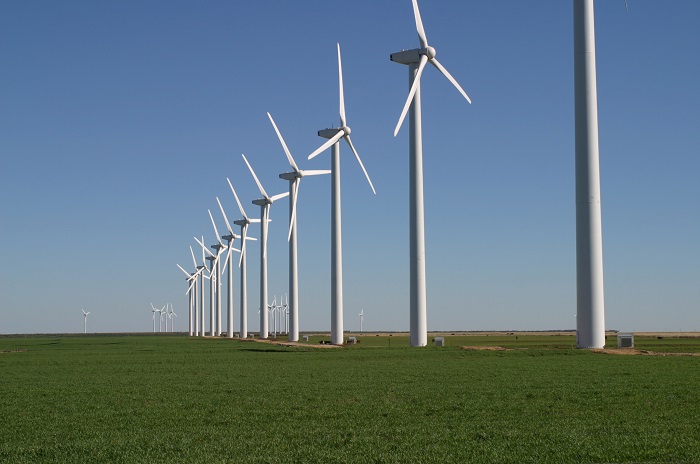America’s wind power industry has surpassed another benchmark — 70 gigawatts. According to the American Wind Energy Association (AWEA), which compiled the report in November, that’s enough to power 19 million homes, or otherwise meet the total electricity demand of Colorado, Kansas, Nebraska, Oklahoma, and Wyoming.

“This American wind power success story just gets better,” Tom Kiernan, AWEA’s chief executive officer, said in a statement. “Wind energy is the biggest, fastest and cheapest way we can cut carbon pollution here in the U.S., and as wind power grows, so will savings for American families and businesses all across the country.”
News of the accomplishment came just days after Congress agreed to extend the tax credit for producing renewable energies like wind power by an additional five years. The goal is to continue this sector’s growth, and phase out the incentive over time.
Some of the other highlights worth pointing out from November:
• ERCOT, the primary grid operator in Texas, saw wind energy peak at 12,971 MW. It also saw wind reliably meet more than 43 percent of electricity demand the following day. For the entire month, wind supplied a full 18.4% of ERCOT’s total demand.
• Wind supplied 12,614 MW in MISO, the grid operator for parts of 12 Midwest states, and one of the world’s largest energy markets.
• Wind production in November reached 9,564 MW in SPP, the grid operator for all or parts of eight states.
• On the main Colorado grid, wind provided 66.4%of the electricity at one point in November.
The last two benchmark milestones for the wind power industry, 50 gigawatts and 60 gigawatts, came back in 2012, when the tax credit was in place. It expired in 2013, and was renewed again at the end of 2014.
Per the report, there are more than 50,000 wind turbines operating in the US at more than 980 utility-scale installations in 40 states and Puerto Rico.
For what it’s worth, the country began the year with a capacity of 65,877MW, with 956 utility-scale wind projects in 39 states and Puerto Rico.
Among the newer wind farms completed this quarter are those recently established in Colorado, Connecticut, Kansas, Maine, Oklahoma, and North Dakota. Worth noting is that North Carolina just announced the start of construction for its first utility-scale wind farm. When it’s complete, it’ll be the largest of its kind in the southeast, and will bring the number of states with at least one commercial-scale wind farm to 41.
Lastly, the AWEA points to two recent studies in its announcement. One, which was conducted by the Energy Information Administration found that wind energy consistently emerged as the most cost-effective method of reducing emissions—it supplies 57% of the additional energy in the lowest-cost compliance solution for the Clean Power Plan. The other comes from the Department of Energy’s recent Wind Vision report, which states U.S. wind energy is poised to double from nearly 5% of U.S. electricity today to 10% by 2020, and double again to 20% by 2030.
Learn more at the American Wind Energy Association website
Advertisement
Learn more about Electronic Products Magazine





